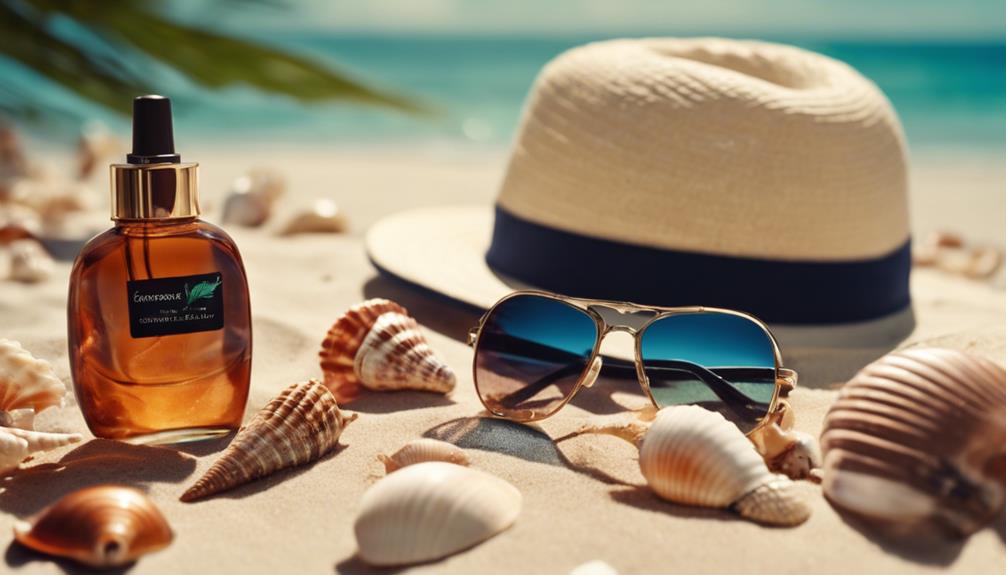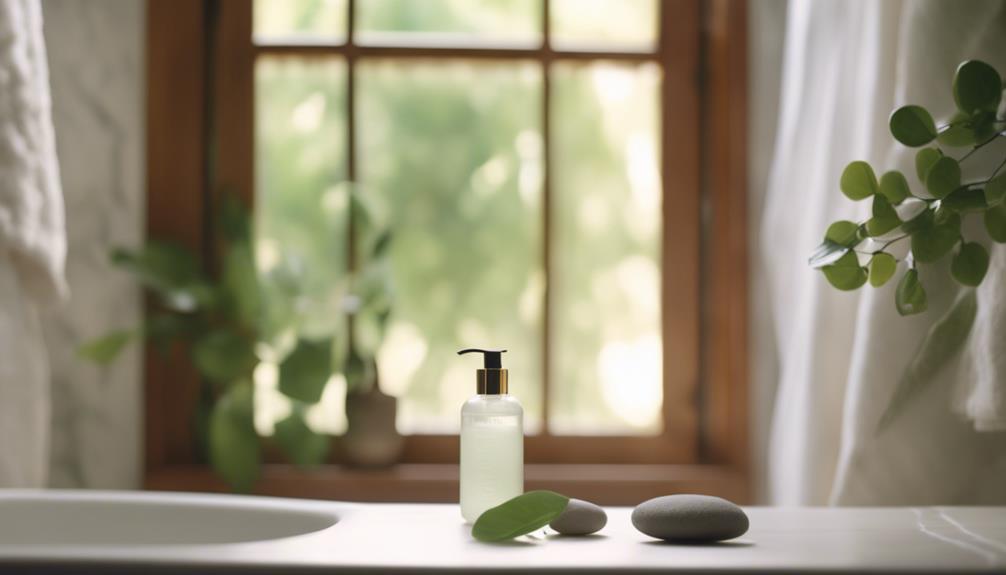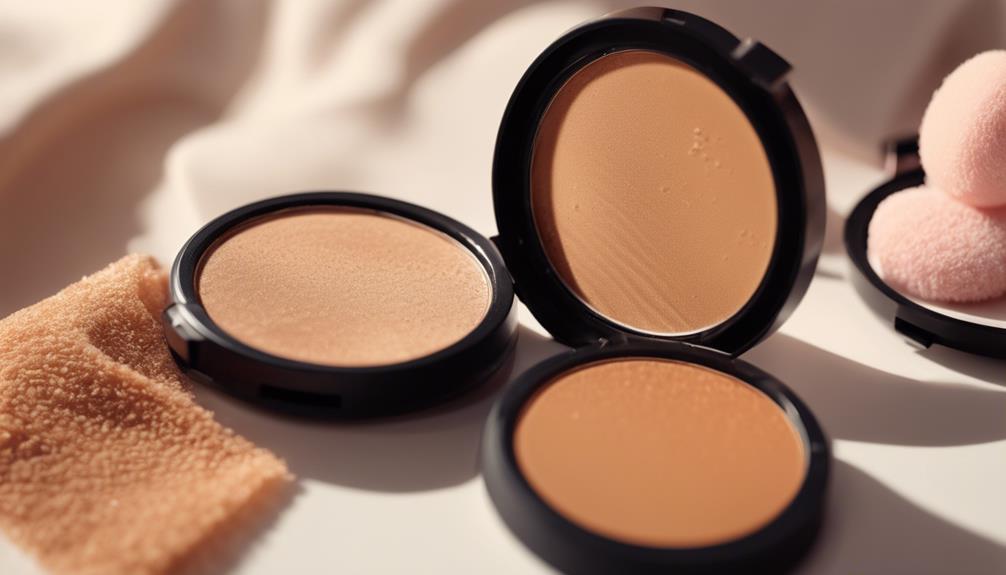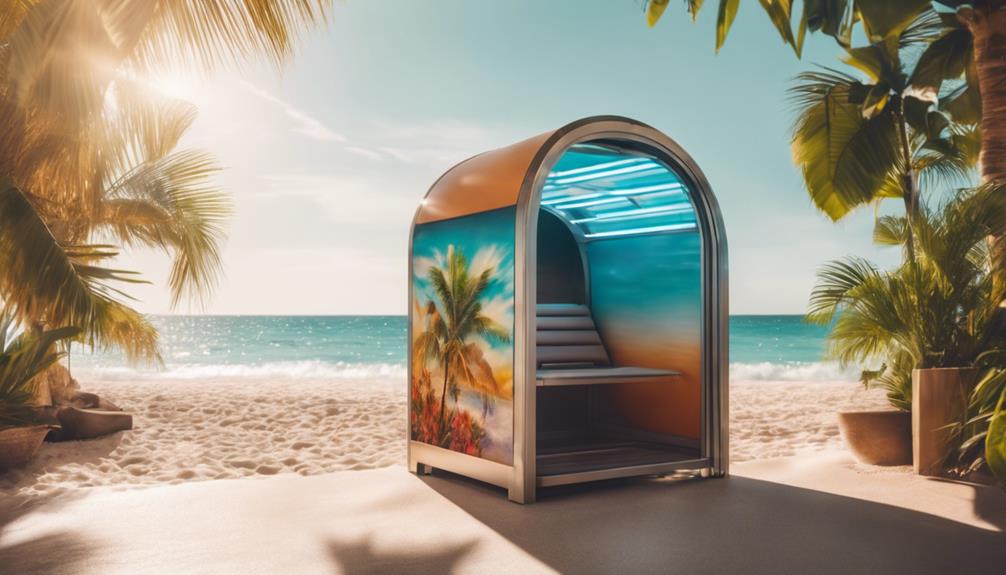If you want to access your perfect indoor tan, start by picking the right lotion! Bronzer lotions give you an instant glow without UV rays, while accelerators ease you into tanning. Don't forget essential ingredients like tyrosine for deeper color and hydration from aloe vera. Apply lotion in circular motions to avoid streaks, and remember to hydrate inside and out. Timing's crucial—short sessions are best, so your skin can adjust. And hey, munching on carrots helps too! With some TLC, you'll shine like summer! Stick around, and you'll discover even more tips to perfect that tan. Consider investing in a customized tanning bed to ensure a consistent and controlled tanning experience. It’s important to protect your skin with SPF if you plan on spending time outdoors, and exfoliating regularly will help maintain an even tan. And don’t forget to take breaks from tanning to give your skin a chance to rest and recover. With these tips and a little dedication, you’ll have that perfect indoor tan in no time!
Key Takeaways
- Choose the right indoor tanning lotion based on your skin type and tanning goals for optimal results.
- Begin with short tanning sessions to acclimate your skin and gradually increase exposure time.
- Maintain skin hydration by drinking water and using moisturizing lotions post-tan to enhance and prolong your glow.
- Incorporate beta-carotene-rich foods like carrots and sweet potatoes into your diet for a natural skin radiance.
Understanding Indoor Tanning Lotions
When you choose indoor tanning lotions, understanding the different types and their ingredients can make all the difference in achieving a flawless tan.
First up, we've bronzer lotions—they're your instant tan buddies! They give you a quick color boost without needing any UV rays.
Then there are the Hot Action and Tingle lotions that get your blood pumping, helping you tan faster.
If you're just starting out, Accelerator and Maximizer lotions are perfect—they gently ease you into the tanning game.
Remember, each kind targets specific skin needs, so pick wisely!
With the right lotion in hand, you're one step closer to that sun-kissed glow, minus the sunburn. Who wouldn't want to rock a fabulous tan?
Key Ingredients for Tanning Success

Choosing the right indoor tanning lotion is just the first step; understanding the key ingredients that enhance your tanning experience can make all the difference in achieving that perfect glow.
Look for lotions packed with Tyrosine, which ramps up melanin production, giving you a deeper tan. DHA is your best friend, too, offering an instant bronzy look while your tan deepens over time.
Don't forget caffeine—it perks up your skin and fights puffiness! Hydrating ingredients like aloe vera and vitamin E keep your skin soft and youthful.
Staying hydrated is key, so drink plenty of water! With the right ingredients, you'll be strutting your stuff with that sun-kissed glow in no time—without ever stepping outside!
Optimal Tanning Techniques

Effective tanning techniques can greatly enhance your indoor tanning results, ensuring a smooth and even complexion.
Start by applying your favorite indoor tanning lotion evenly, using a circular motion to avoid those dreaded streaks. Don't forget to wash your hands afterward—unless you want to rock the “Oompa Loompa” look!
Next, make sure to keep your skin hydrated, as this helps maintain that gorgeous glow. You can also choose the right lotion based on your skin type, whether you prefer hot action, bronzers, or accelerators for beginners.
Timing Your Tanning Sessions

Timing your tanning sessions is essential for achieving the best results while protecting your skin from overexposure.
Start with shorter sessions to let your skin get used to the tanning process—think of it as a warm-up before the big game!
You'll want to avoid those peak UV hours between 10 am and 4 pm, when the sun's rays are super intense, like a spotlight on a stage.
Customize your schedule based on how sensitive your skin is; if you're a newbie, go for minimal exposure.
Remember to give your skin recovery time between sessions; after all, even a superstar needs a break!
With the right timing, you can achieve that gorgeous glow without the risk of looking like a lobster.
Dietary Tips for Better Tans

Incorporating tan-enhancing foods into your diet can greatly boost your tanning results and improve your skin's overall health.
Think of colorful carrots and sweet potatoes as your tanning sidekicks—they're packed with beta-carotene, making your skin glow like a superstar!
Don't forget leafy greens like spinach; they're full of lutein, which helps protect your skin from sun damage.
Citrus fruits are also fantastic, offering vitamin C to keep your skin firm and fabulous.
And let's not overlook healthy fats from avocados—your skin will thank you for the hydration!
Common Indoor Tanning Myths

Eating the right foods can enhance your tanning results, but many people still believe common myths about indoor tanning that can lead to misconceptions and mistakes. Let's clear the air!
| Myth | Truth |
|---|---|
| Tanning beds are safe | They can still cause skin damage and aging! |
| You don't need sunscreen indoors | UV rays are present, so protection is key! |
| Tanning makes you immune to sunburn | It actually makes your skin more sensitive! |
Don't let these myths mislead you! Knowing the truth helps you tan safely and beautifully. Remember, indoor tanning can give you that sun-kissed glow, but it's important to stay informed and protect your skin like the treasure it is! Happy tanning!
Maintaining Your Indoor Tan

How can you effectively maintain your indoor tan and keep your skin glowing?
First, hydration is key! Drink plenty of water and use a good moisturizer daily to avoid that dreaded peeling. You'll want to slather on lotion post-tan, too, especially if it contains ingredients like aloe vera or vitamin E. These help lock in moisture, keeping your skin soft.
Also, try to limit hot showers and harsh soaps – they can wash away your hard-earned tan faster than you can say 'oops!'
Finally, consider eating beta-carotene-rich foods like carrots and sweet potatoes; they can give your skin a little extra glow.
Keep these tips in mind, and you'll rock that indoor tan like a pro!
Frequently Asked Questions
Can Indoor Tanning Lotions Expire, and How Should I Store Them?
Yes, indoor tanning lotions can expire. Store them in a cool, dry place away from direct sunlight. Always check the expiration date and discard any that smell off or have a changed consistency.
Is It Safe to Tan Indoors if I Have Sensitive Skin?
If you have sensitive skin, indoor tanning can be safe with precautions. Start with a patch test and use gentle, hydrating lotions. Monitor your skin's reaction and adjust your sessions accordingly to prevent irritation.
How Soon Can I Shower After Using Indoor Tanning Lotion?
You should wait at least four to six hours after applying indoor tanning lotion before showering. This allows the ingredients to fully absorb and maximize your tan, ensuring the best results and longevity.
Can I Mix Different Types of Tanning Lotions for Better Results?
Imagine blending different paint colors for a masterpiece. Mixing tanning lotions can enhance results, but be cautious. Some combinations might irritate your skin. Test small areas first to find what works best for you and avoid streaks.
What Should I Do if I Experience Skin Irritation From Tanning Products?
If you experience skin irritation from tanning products, stop using them immediately. Rinse the area with cool water, apply a soothing moisturizer or aloe vera, and consult a dermatologist if irritation persists. Your skin's health matters!
Conclusion
Now that you're armed with all this fabulous knowledge about indoor tanning, you're practically a tanning wizard ready to conjure up that perfect glow!
With the right lotion, techniques, and a sprinkle of patience, you'll be turning heads faster than a celebrity on the red carpet.
So, grab your favorite lotion, slather it on, and let the tanning magic happen!
Remember, it's all about looking sun-kissed, not like a lobster, so tan smart and shine bright!









